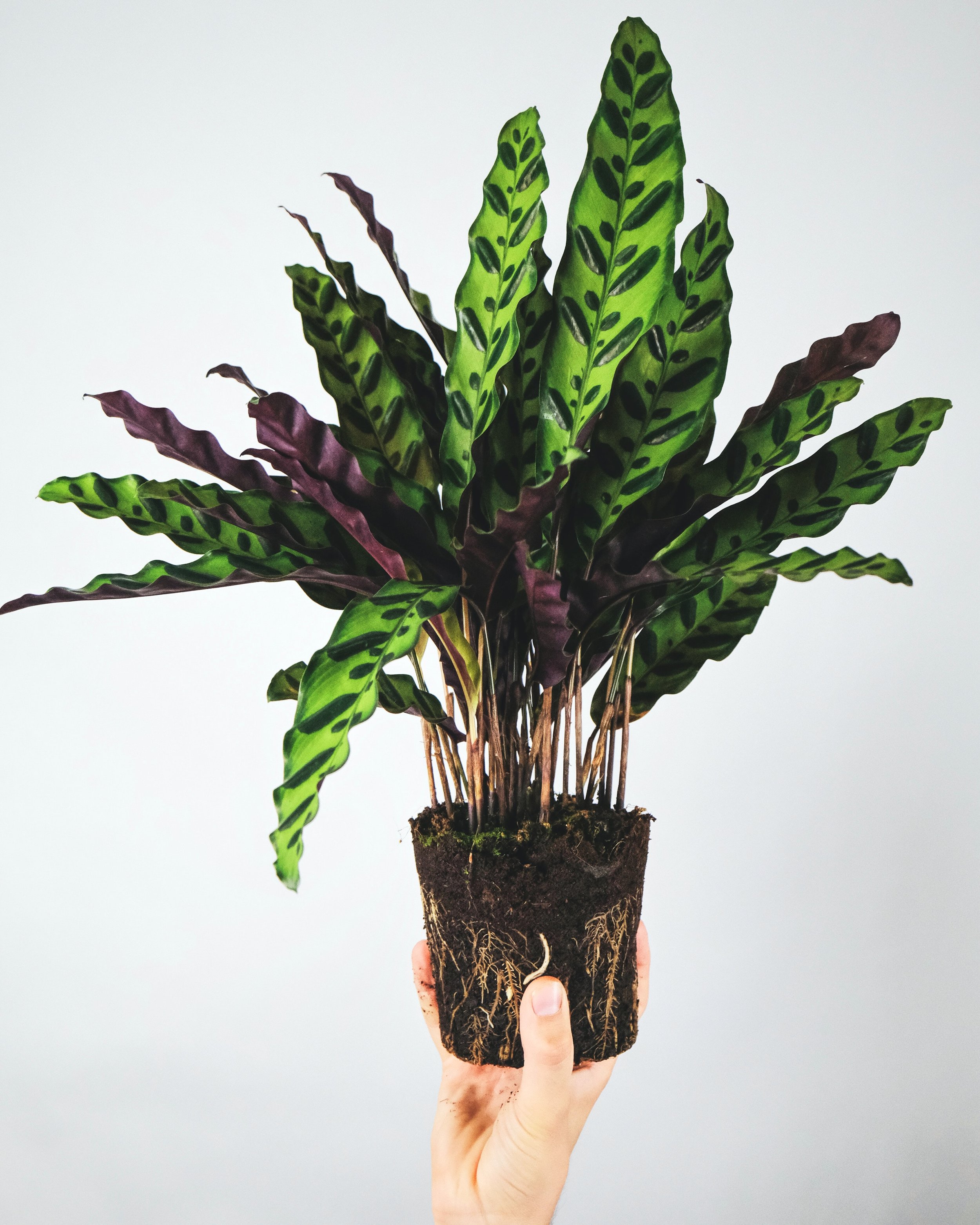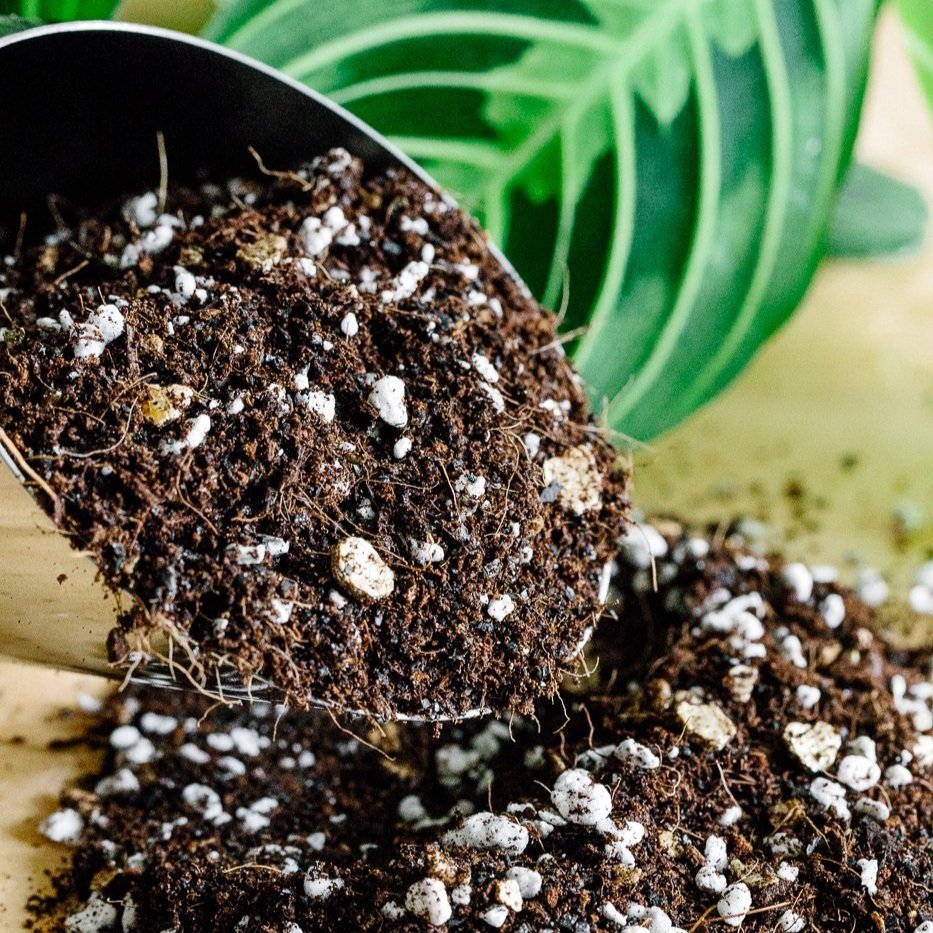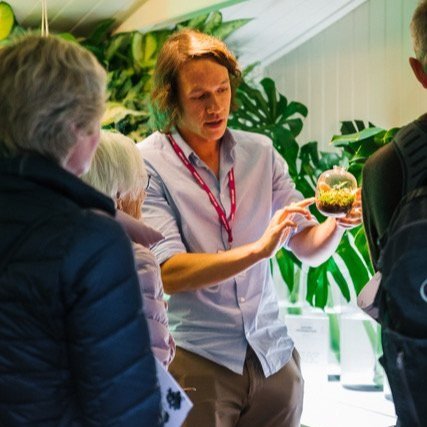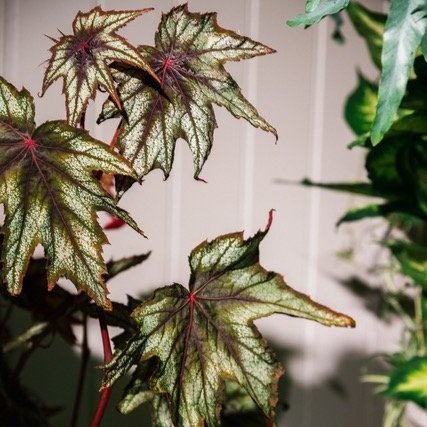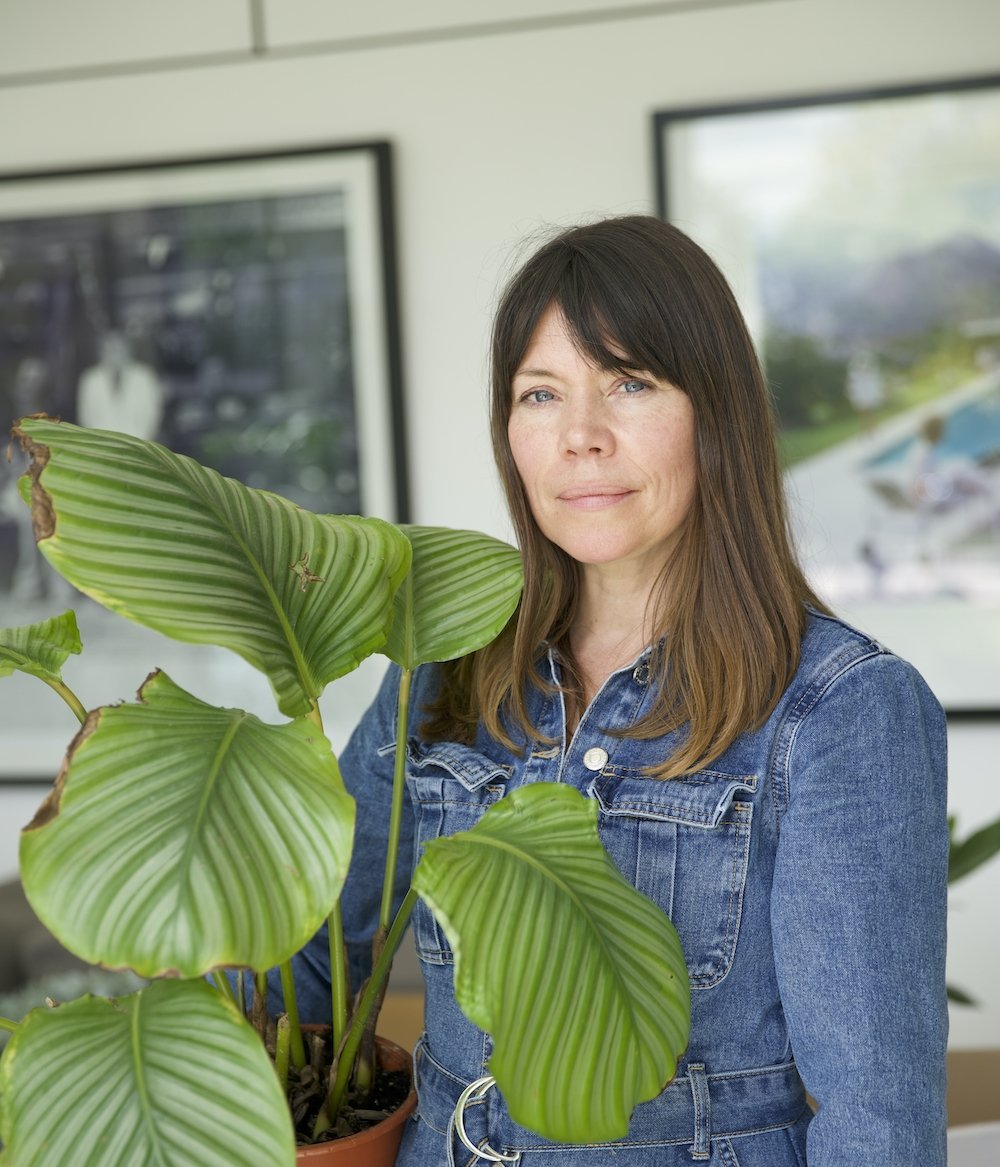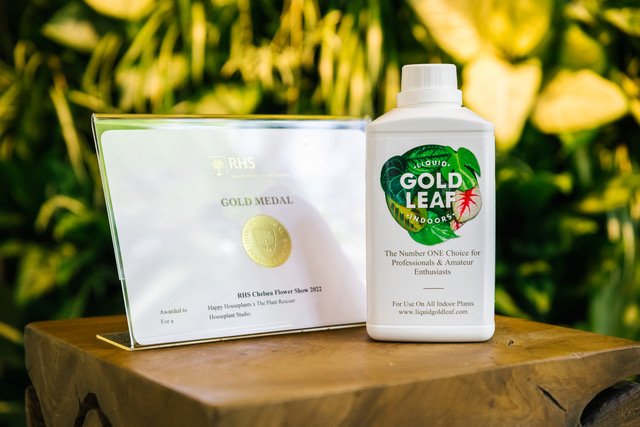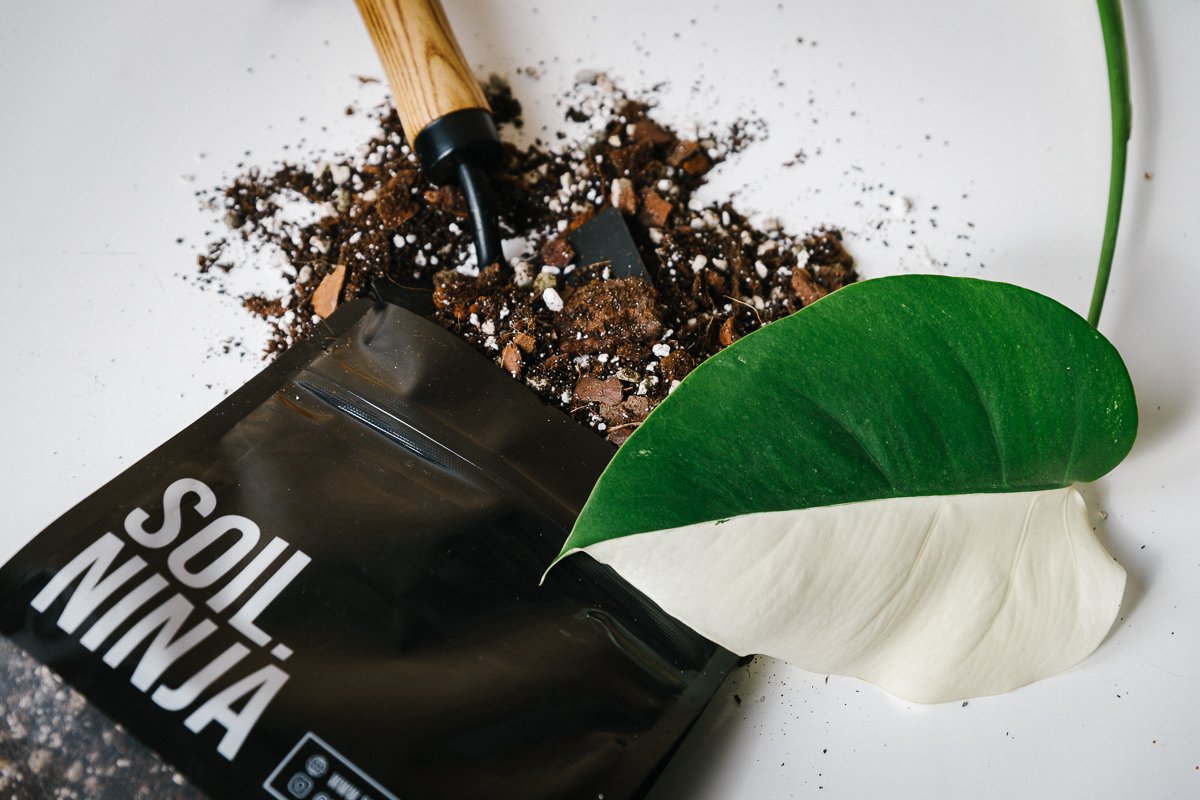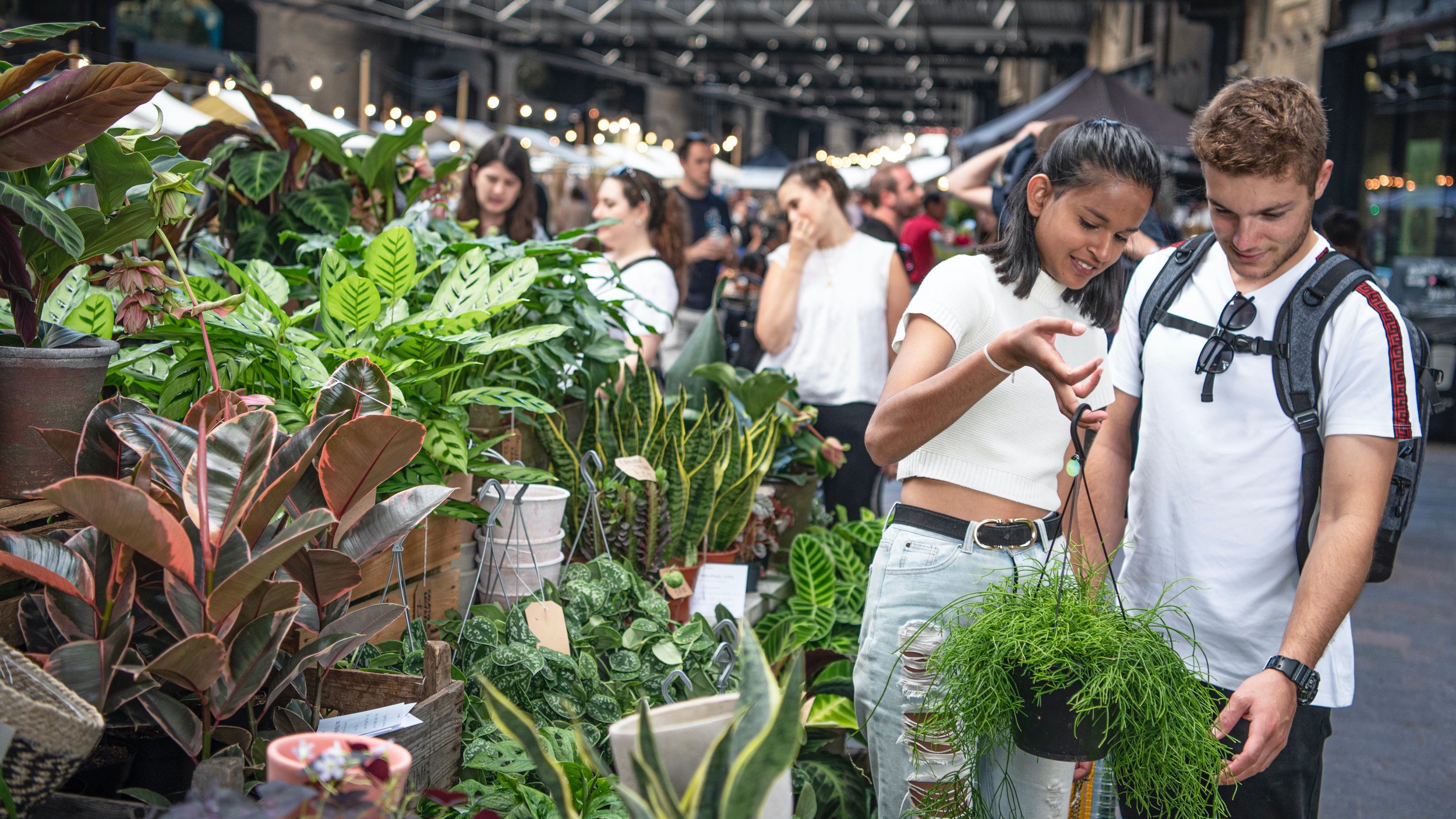As plant lovers, most of us are well aware that our houseplants' soil should be a good mix of components that provide drainage and air flow to the plant's roots, allowing an efficient uptake of water and nutrients. But, most of us are unaware of all the miraculous goings-on in the soil that provide a vital lifeline for our plants.
Photo by Severin Candrian
Did you know that within just one gram of healthy soil there are up to 10 billion bacterial cells and organisms that work in partnership with a plant to keep it healthy?! Read on to find out exactly what lies in healthy soil, how our plant care can damage plant health, and how to keep our soil and plants healthy…
We hear from the experts behind The Plant Clinic; an award winning team of houseplant pros that will be at our Bristol market armed with the knowledge to educate houseplant owners on how to reduce the stress our plants experience in our homes and how to increase plants' health and well-being.
The Plant Clinic is Sarah @theplantrescuer, Ben @worcester terrariums, Soil.Ninja, Tea Francis @teasjungle and Liquid Gold Leaf
So, what's really in our houseplant soil?
Photo of Soil.Ninja mix by Jamietakes.photos
Healthy soil is home to an astounding amount of living organisms, get up close with a microscope and you’d see Fungi, Actinomycetes (bacteria), Protozoa (single celled organisms) and Nematodes (a wide ranging group of roundworms) all living and working together in a mutually beneficial relationship with the plant; feeding it and feeding off it, fighting off pathogens and pests, and in turn being given the right environment to thrive in.
Most common nematodes living in our plant’s soil work in partnership with the plant while only a couple will attack the roots. When we use traditional fertilisers, pesticides & fungicides we unwittingly deplete good & bad soil microbiome and start the process of reducing the plants ability to protect, feed and rejuvenate itself.
One plant care expert who really knows his stuff about the creepy crawlies that benefit our plants is Ben Newell aka Worcester Terrariums. Ben has built up a huge social media following who are addicted to his surprisingly soothing videos of his bioactive terrariums - in other words, terrariums with lots of living creatures inside! If you haven’t seen Ben’s videos, you’ve been missing out! Take a look here.
Ben @Worcesterterrariums for the Plant Clinic RHS Chelsea
Ben’s terrarium plants thrive due to being in a closed environment where he can mimic the humid and nutrient rich forest floor of their natural habitat. They don’t need added fertiliser or pest control as the organisms kindly poo creating plant food and together with the microscopic organisms in the soil, they keep pests and diseases in check.
Why plant care doesn’t always lead to healthy plants
Most of us don’t keep our houseplants in a closed environment like Worcester Terrariums and therefore we have to work a lot harder to try and mimic the plant’s native environment within our homes.
Plants within The Plant Clinic RHS Chelsea
In trying to keep our plants thriving, we can actually cause stress to the plant in ways that can throw it out of natural balance…too much light, too little light, not enough humidity, overwatering, insufficient nutrients, etc, etc! We all know the trials of plant care, but did you know that many fertilisers and pest control on the market actually kill off beneficial microbes in the plants soil? All these factors can cause stress on the plant, in turn causing the plant’s defences to weaken and therefore succumb to pests and diseases.
But let’s not dwell on what can go wrong with plant care! We hear from some brilliant brains of the houseplant world to share their tips for keeping plants healthy by focussing on a balanced soil system…
Expert tips for healthy plants
Top tips from houseplant hero Sarah Gerrard-Jones AKA @theplantrescuer
“The most environmentally thing you can do for your plant is keep it alive” (Sarah Gerrard-Jones)
1. The most important thing you can do is give your plant enough light so it can photosynthesis. It might look nice in the corner of your room, far from a window but it won’t look nice for long. Most plants need to be closer to a window than you think!
2. Don’t water without checking the soil for moisture. You can do this by lifting up the pot and weighing it in your hands or use your finger. Make sure your pot has drainage holes so excess water can escape.
3. Use the right potting mix for your plant. Soil Ninja make bespoke mixes for all species of plants.
4. Check your plants for pests once a week. A few bugs are far easier to tackle than an infestation. I recommend biological control.
5. Feed your plant when it's growing. Choose a feed that encourages beneficial microbes in the soil and doesn't kill them. I recommend Liquid Gold Leaf.
Ian Morrison, bioagronomist (soil scientist to you and me) and Liquid Gold Leaf creator shares his advice
Liquid Gold Leaf, our go-to plant feed
If repotting, choose a living substrate, one that has confirmed beneficial microbial life.
Ian explains that adding select fungi and beneficial bacteria to your soil restores vital organisms, aids the roots ability to uptake water and nutrients, and actively fights against diseases - keep an eye out for Liquid Gold Leaf’s next revolutionary and microbe friendly product, Rhizo + and how to retain this balance by using independently lab tested Biorational feeds AKA Liquid Gold Leaf.
Arachnologist (yes that’s a spider expert), ecologist, and Aroid lover, Tea Francis aka @teasjungle shares her top tips
If you’re battling with a serious pest infestation, introduce biological controls such as beneficial predators. These little creatures will live happily amongst your plants keeping pests at bay.
Tea encourages people to live peacefully with certain invertebrates in their homes, amongst their plants, “learning how to differentiate between the good and bad, how to encourage the good and control the bad in the process, instead of instantly reaching for an insecticide and nuking their entire collection.”
The importance of understanding a plant’s native habitat with Soil.Ninja
Soil Ninja photo by Jamietakes.photos
Understanding how your plants would thrive in the wild is a great place to start when it comes to keeping them happy in your home. As we’ve learnt; healthy, appropriate soil is fundamental to this.
We had a closer look into 3 of Soil Ninja’s most popular blends and what makes them so right for certain plant varieties.
We hope you have been as intrigued by the weirdly wonderful world of soil as we have.
You’ll have the chance to hear and see lots more on the subject from the experts themselves at our upcoming Bristol event Sunday 23rd October, where you’ll get up close and personal with some of the living organisms we’ve heard about under microscopes!
PLUS, 200 visitors will get the chance to take away a sample of Liquid Gold Leaf’s brand new-to-market product for soil health.
There is a thriving houseplant community in Bristol and beyond and we can’t wait to bring these indie businesses together on Sunday 23rd October at the brilliant PROPYARD. Find us inside the impressive Crane Room with some of the regions’ best planty businesses, growers and botanical designer-makers.
Expect houseplant, pots, hanging planters, terrariums, soil mixes and so much more for plant lovers and novices alike.
Book your free ticket to the event here
Sunday 23rd October
10am - 5pm
The Crane Room at PROPYARD 39-46 Feeder Road, Bristol, BS2 0SE
